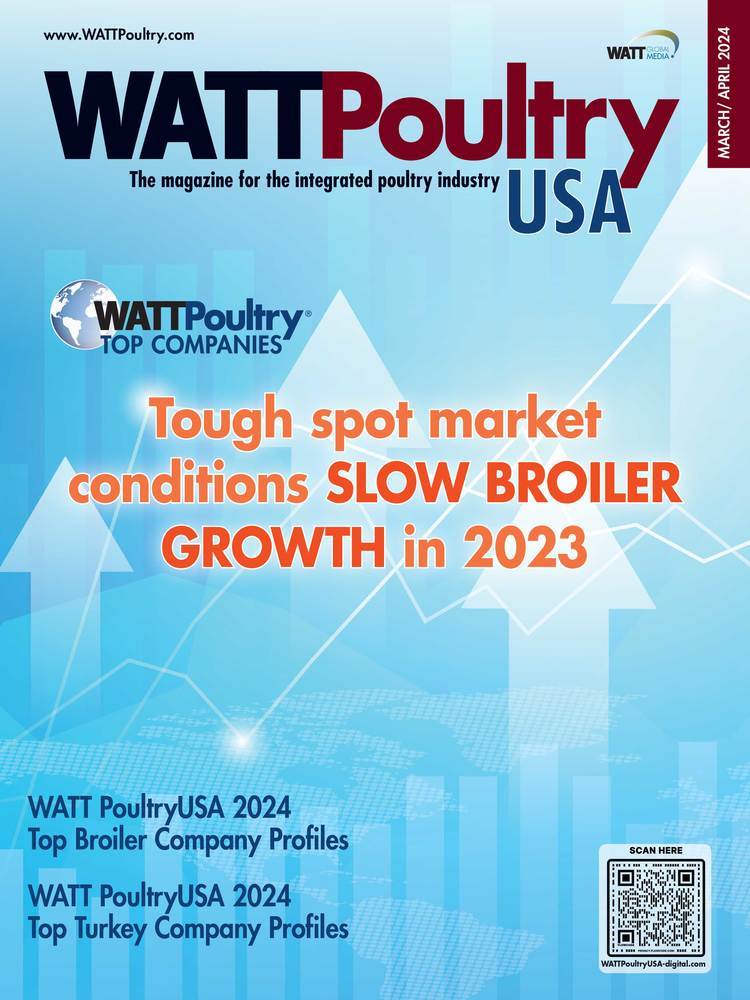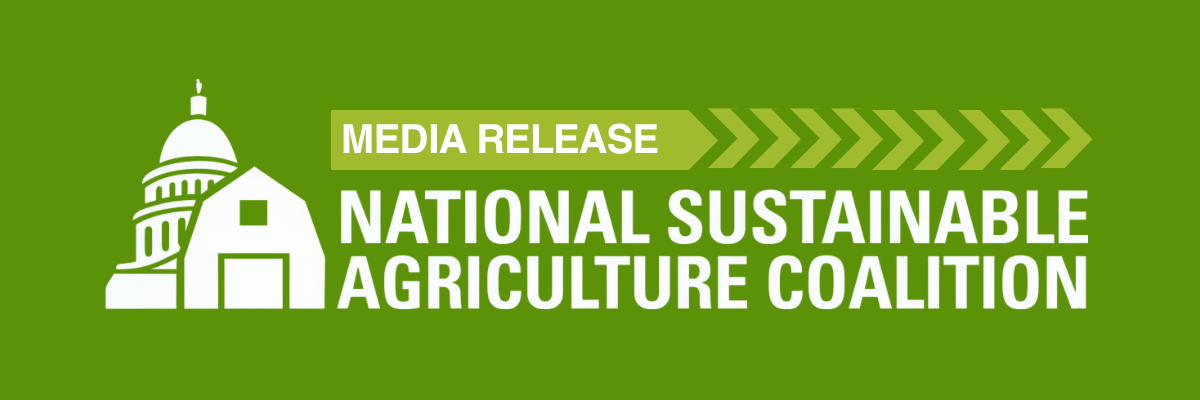IPFC emphasizes environment, technology – WATTPoultry.com

Report on the International Poultry Industry Forum China (IPFC)
Executive Summary
The International Poultry Industry Forum China (IPFC) convened on July 11 in Kaifeng, Henan province, attracting over 500 experts, entrepreneurs, and academic representatives. The forum centered on the dual themes of “Technology Empowerment” and “Green Transformation,” with a significant focus on aligning the poultry industry’s development with global Sustainable Development Goals (SDGs). Discussions explored technological innovations, the creation of a sustainable industrial ecosystem, and the deep integration of technology to address contemporary challenges in food production and consumption.
Forum Themes and Alignment with Sustainable Development Goals (SDGs)
The IPFC’s agenda demonstrated a clear commitment to advancing several key SDGs through innovation and responsible practices in the poultry sector.
SDG 2 (Zero Hunger) & SDG 3 (Good Health and Well-being)
- Enhanced Nutrition: The forum addressed micronutrient deficiencies by promoting the development of nutrient-enriched eggs (e.g., with selenium, folic acid, ω-3), directly contributing to improved public health and nutrition.
- Food Security and Safety: Discussions on intelligent disease early warning systems and improved animal welfare standards aim to secure the food supply chain and enhance the quality and safety of poultry products.
- Animal Health: Research linking slower-growing broiler breeds to lower incidences of meat quality issues like wooden meat underscores the connection between animal well-being and healthier food products.
SDG 9 (Industry, Innovation, and Infrastructure) & SDG 8 (Decent Work and Economic Growth)
- Technological Integration: The forum highlighted innovations such as digital farming and genome selection technology (as used by Hyline International) as crucial for building a resilient and modern industrial infrastructure.
- Economic Viability: By developing comprehensive industrial chains and high-value products, companies like Henan Huaying Agricultural Development Co., Ltd. are creating sustainable business models that foster economic growth.
- Intellectual Exchange: The event served as a global platform to promote the deep integration of technology and industry, fostering innovation-driven development.
SDG 12 (Responsible Consumption and Production)
- Green Transformation: The forum’s core theme emphasized building an industrial ecosystem that balances economic benefits with environmental responsibility.
- Animal Welfare Standards: The increasing consumer and industry focus on animal welfare reflects a shift towards more ethical and sustainable production patterns.
- Meeting Consumer Demand: The industry is adapting to consumer preferences for high-value, sustainably produced products, such as specific chicken parts, which also helps in reducing waste and maximizing resource use.
Key Forum Discussions and Findings
Technology and Sustainable Industrial Ecosystems
A primary focus of the forum was leveraging technology to create a more sustainable poultry industry. Key points included:
- The exploration of digital farming technologies and intelligent disease early warning systems to improve efficiency and animal health, supporting SDG 9.
- A strategic emphasis on building an industrial ecosystem that harmonizes economic growth with environmental stewardship, directly addressing the principles of SDG 12.
The Growing Importance of Animal Welfare
Animal welfare was identified as a critical component of modern poultry production and a key consumer concern.
- Ryan Bennett, President of the International Poultry Welfare Alliance (IPWA), highlighted the dramatic increase in attention to animal welfare in China over the past decade.
- Consumer priorities have evolved, placing animal welfare on par with food safety and price, thereby driving the market towards more responsible production methods as outlined in SDG 12.
Broiler Market Analysis and Breed Development
Reports at the forum analyzed the current state and future direction of China’s broiler market.
- Consumer demand is shifting towards diversified and high-value products, presenting an economic opportunity aligned with SDG 8.
- A significant challenge is that current broiler breeds, selected primarily for meat yield, often exhibit lower meat quality. Studies from Wageningen University and the RSPCA confirmed that fast-growing breeds have a higher incidence of wooden meat, highlighting a conflict between rapid production and the goals of SDG 3 and SDG 12.
Innovations in Poultry Meat and Egg Production
The forum showcased specific company strategies and research aimed at overcoming industry challenges.
- Integrated Supply Chains: Henan Huaying Agricultural Development Co., Ltd. presented its comprehensive industrial model, from breeding to processing, as a successful example of specialized, high-value production contributing to SDG 8 and SDG 9.
- Nutrient-Enriched Eggs: To combat low profitability and address public health concerns, research teams are focusing on developing eggs fortified with essential micronutrients. This initiative directly supports SDG 2 and SDG 3 by using eggs as a carrier for improved nutrition.
- Genetic Advancement: Hyline International’s application of genome selection technology to develop breeds with superior stress resistance and productivity exemplifies the innovation required to advance SDG 9 within the industry.
Analysis of Sustainable Development Goals in the Article
1. Which SDGs are addressed or connected to the issues highlighted in the article?
-
SDG 2: Zero Hunger
- The article extensively discusses the poultry industry, a key source of protein and food. It addresses issues of food production, such as improving broiler breeds and egg-laying chicken farming. It also directly tackles nutrition by mentioning efforts to develop nutrient-enriched eggs to combat micronutrient deficiencies, thus contributing to food security and improved nutrition.
-
SDG 3: Good Health and Well-being
- The article connects the poultry industry to public health by highlighting the problem of micronutrient deficiencies (selenium, folic acid, ω-3 polyunsaturated fatty acids) among residents. The development of nutrient-enriched eggs is presented as a direct strategy to improve public health standards.
-
SDG 8: Decent Work and Economic Growth
- The forum’s focus on building an “industrial ecosystem that balances economic benefits with environmental responsibility” points to sustainable economic growth. The article discusses increasing productivity and value through technological innovation (digital farming), diversification (high-value chicken parts), and developing comprehensive industrial chains like that of Henan Huaying Agricultural Development Co., Ltd.
-
SDG 9: Industry, Innovation, and Infrastructure
- This goal is central to the article, highlighted by the forum’s main themes of “Technology Empowerment” and “Green Transformation.” It details technological innovations like digital farming, intelligent disease early warning systems, and the application of genome selection technology in breeding. This shows a clear focus on upgrading the industry through technology and innovation.
-
SDG 12: Responsible Consumption and Production
- The article addresses this goal through multiple angles. The “Green Transformation” theme points towards sustainable production patterns. The significant discussion on animal welfare, including the rise of welfare organizations and consumer concern, reflects a shift towards more responsible consumption. The issue of “wooden meat” in fast-growing broilers is a clear example of a production pattern that is being questioned for its quality and ethical implications.
2. What specific targets under those SDGs can be identified based on the article’s content?
-
SDG 2: Zero Hunger
- Target 2.1: End hunger and ensure access by all people… to safe, nutritious and sufficient food all year round. The article addresses this by discussing consumer concerns about food safety and the development of “nutrient-enriched eggs” to improve the nutritional value of a staple food.
- Target 2.2: End all forms of malnutrition. This is directly addressed by the mention of “micronutrient deficiencies among residents (such as selenium, folic acid, and ω-3 polyunsaturated fatty acids)” and the research focused on “developing nutrient-enriched eggs using eggs as a nutritional carrier.”
- Target 2.3: Double the agricultural productivity and incomes of small-scale food producers. The article relates to this by discussing efforts to improve the poultry industry’s productivity and value, such as developing “Outstanding Broiler Breeds,” increasing the value of chicken products, and improving egg production rates through advanced breeding.
-
SDG 3: Good Health and Well-being
- Target 3.4: Reduce premature mortality from non-communicable diseases through prevention and treatment and promote mental health and well-being. The initiative to combat micronutrient deficiencies through enriched eggs is a preventative health measure aimed at enhancing “public health standards.”
-
SDG 8: Decent Work and Economic Growth
- Target 8.2: Achieve higher levels of economic productivity through diversification, technological upgrading and innovation. The article highlights this through the forum’s theme “Technology Empowerment,” the mention of “digital farming,” and the discussion on diversifying chicken products to include “high added value” items like chicken feet.
-
SDG 9: Industry, Innovation, and Infrastructure
- Target 9.4: Upgrade infrastructure and retrofit industries to make them sustainable… and greater adoption of clean and environmentally sound technologies. The theme of “Green Transformation” and the goal to “build an industrial ecosystem that balances economic benefits with environmental responsibility” directly align with this target.
- Target 9.5: Enhance scientific research, upgrade the technological capabilities of industrial sectors… encouraging innovation. The article exemplifies this with Hyline International becoming the “world’s first company to apply genome selection technology” and its “intellectual property expenditures accounting for 10%.”
-
SDG 12: Responsible Consumption and Production
- Target 12.2: Achieve the sustainable management and efficient use of natural resources. The “Green Transformation” theme of the forum directly supports this target by aiming for a more environmentally responsible poultry industry.
- Target 12.8: Ensure that people everywhere have the relevant information and awareness for sustainable development. The article notes that “people’s attention to animal welfare increases” and “consumers are more concerned about food sources than ever before,” indicating growing awareness that drives responsible consumption. The growth of animal welfare organizations from one to over 100 also supports this.
3. Are there any indicators mentioned or implied in the article that can be used to measure progress towards the identified targets?
-
Indicators for Production Quality and Animal Welfare
- Incidence rate of wooden meat: The article provides specific data points, stating that certain fast-growing chicken breeds had “wooden meat proportions of 23.4% and 14.3%,” and that slower-growing broilers had a “28.7% lower” incidence rate. This is a direct indicator of meat quality and an indirect indicator of animal welfare associated with production methods.
- Daily weight gain of broilers: The article links weight gain (e.g., “55-60 grams” vs. “over 65 grams”) directly to the incidence of wooden meat, making it a measurable indicator for production practices.
-
Indicators for Public Health and Nutrition
- Prevalence of micronutrient deficiencies: The article explicitly names deficiencies in “selenium, folic acid, and ω-3 polyunsaturated fatty acids” as a challenge. The prevalence of these deficiencies in a population is a measurable health indicator.
-
Indicators for Agricultural Productivity
- Key indicators in egg-laying chicken farming: The article explicitly lists measurable indicators used in the industry, including “egg production rate, body weight and nutritional control, as well as skeletal structure and calcium reserves.”
-
Indicators for Innovation and R&D
- Intellectual property expenditures: The article mentions that for Hyline International, “intellectual property expenditures accounting for 10%.” This is a quantifiable indicator of investment in research and innovation.
-
Indicators for Social Awareness
- Number of animal welfare organizations: The article provides a clear metric of growing social awareness by stating that the number of these organizations in China grew from “one… in 1985” to “more than 100 organizations” currently.
4. Table of SDGs, Targets, and Indicators
| SDGs | Targets | Indicators |
|---|---|---|
| SDG 2: Zero Hunger | Target 2.2: End all forms of malnutrition. | Prevalence of micronutrient deficiencies (selenium, folic acid, ω-3 polyunsaturated fatty acids). |
| SDG 2: Zero Hunger | Target 2.3: Double agricultural productivity. | Key indicators in egg-laying chicken farming (egg production rate, body weight, nutritional control, skeletal structure, calcium reserves); Daily weight gain of broilers. |
| SDG 9: Industry, Innovation, and Infrastructure | Target 9.5: Enhance scientific research and innovation. | Intellectual property expenditures as a percentage of investment (e.g., 10%). |
| SDG 12: Responsible Consumption and Production | Target 12.2: Achieve the sustainable management and efficient use of natural resources. | Incidence rate of wooden meat (e.g., 23.4%, 14.3%). |
| SDG 12: Responsible Consumption and Production | Target 12.8: Ensure people have information for sustainable lifestyles. | Number of animal welfare organizations (growth from 1 to over 100). |
Source: wattagnet.com

What is Your Reaction?
 Like
0
Like
0
 Dislike
0
Dislike
0
 Love
0
Love
0
 Funny
0
Funny
0
 Angry
0
Angry
0
 Sad
0
Sad
0
 Wow
0
Wow
0







































































